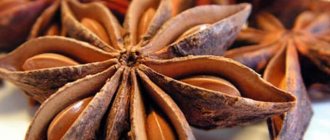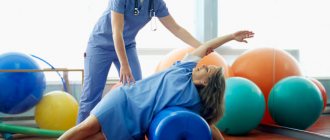Strength loads affect the functioning of the pancreas, so many patients ask what exercise for chronic pancreatitis will not harm their health. Problems can be caused by various factors, which include poor-quality food, stressful situations, food poisoning and various concomitant diseases. Along with proper nutrition, exercise is recommended for pancreatitis, which has a positive effect on the body.
Directions of physical therapy for pancreatitis
The following physical activity methods are considered the most suitable areas of exercise therapy for patients with an established diagnosis of pancreatitis:
- yoga classes,
- breathing exercises, including performing the “vacuum” exercise, special visceral massage,
- qigong gymnastics,
- static training to strengthen the core muscles, for example, “plank”,
- swimming,
- Pilates,
- callanetics.
Intense power loads, heavy lifting, bodybuilding, running, jumping, bending and other exercises that negatively affect the condition of the pancreas (PG) or other organs of the digestive tract are strictly contraindicated.
When can you start training?
During a pancreatic attack, the patient feels so unwell that he himself cannot perform any exercises. At the stage of exacerbation, the patient is recommended to follow a strict diet (fasting in the first 3 days) and bed rest.
After acute abdominal pain subsides, vomiting, diarrhea stops, and body temperature normalizes, you should begin to do simple exercises. Goals of physical culture:
- prevention of congestion in the lung tissue, which quickly develops with prolonged immobilization and leads to hypostatic pneumonia in bedridden patients,
- improvement of blood circulation in the tissues of the pancreas,
- activation of the functions of all internal organs,
- normalization of stool,
- prevention of stagnation of venous blood and lymph in the vessels of the lower extremities, pelvis, and abdominal cavity.
When the stage of remission of chronic pancreatitis is reached, specially selected exercise therapy complexes should be performed by the patient systematically every day.
Sports activities
Bodybuilding develops skeletal muscles, therefore, together with strength loads on various muscles, they organize the nutrition process, the basis of which is protein food. Human muscles and many organs are made of protein. Thanks to its molecules, the body's immune system is formed. In addition, the protein nature of some hormones and enzymes is noted.
Important information: Is it possible to eat garlic if you have pancreatitis or not?
Protein has the unique ability to not accumulate like glycogen and fat. Excess protein is excreted through the kidneys, and it is absorbed in the right amount. Its consumption depends on the intensity of physical activity. Muscle growth occurs due to food entering through the gastrointestinal tract.
For this reason, pumping them up with proper nutrition is quite easy.
Pancreatitis and physical activity require the consumption of protein foods. Preference is given to protein of animal origin, because it is easily digestible. Thanks to it, damaged tissue in the organ is restored. When the exacerbation of the disease passes, protein foods are necessary for the synthesis of insulin and digestive enzymes.
For pancreatitis, you can perform a set of exercises that improve blood circulation in the abdominal organs. It is worth remembering that therapeutic exercises for pancreatitis are carried out when the period of exacerbation of the disease has passed. At the same time, it is necessary to monitor how you feel and stop when unpleasant sensations appear.
Although protein is necessary for pancreatitis, it is not advisable to combine bodybuilding with it. Bodybuilding exercises are aimed at muscle growth, and not at restoring the pancreas. Protein shakes and vitamin supplements may cause more damage to the gland. Even at the remission stage, pancreatitis and bodybuilding can negatively affect your well-being.
Breathing exercises
The most useful exercises for this disease are breathing exercises. These exercises were developed by Alexandra Strelnikova. They are associated with certain breathing techniques. They can be performed at any time of the day, the main thing is that the stomach and intestines are empty. That is, it is advisable to perform breathing exercises on an empty stomach and after bowel movements. The number of exercises and approaches is determined by the doctor individually for each patient.
Gymnastics, despite its simplicity, should be performed under the supervision of a physical therapy instructor, especially at first. The specialist will monitor the correctness of the exercises and the patient’s condition during exercise. If there is the slightest deterioration in the condition, the appearance of pain or nausea, physical therapy is canceled until the patient’s well-being improves and the results of laboratory and instrumental examinations normalize.
Simple breathing exercises
This exercise should be performed up to 2 times a day, every day, if tolerated well. It is usually performed in the starting position lying down with your knees bent. Method of performing simple breathing exercises:
- Inhale deeply and exhale completely slowly, figuratively “pressing” the front wall of the abdomen to the spine, hold your breath.
- Inhale deeply, exhale, inflate your stomach, hold your breath.
- Inhale halfway deeply, hold your breath for 2-3 seconds, and finish inhaling. Inflate your stomach for 3 seconds, pull it in for 6 seconds, then quickly inflate it again and immediately pull it back in, then relax your abdominal muscles.
- Exhale, forcefully drawing in the abdominal muscles, hold your breath, relax. Inhale with your stomach, inflating it, exhale, pulling your abs towards your spine.
- standing (better - leaning forward a little and resting your hands on the table),
- in a semi-squat position, resting your hands on your knees,
- On knees,
- lying on your back with your knees bent.
Exercise "vacuum"
This useful exercise is performed in any starting position:
Having chosen a suitable pose, you usually need to inhale, then exhale completely and pull the abdominal muscles inward as much as possible and freeze in this position. Perform these exercises 10 times.
Visceral-diaphragmatic-osteopathic massage
This technique of breathing exercises is called massage, since when it is performed, mechanical stimulation of internal organs occurs, causing improved blood circulation in the tissues of the abdominal cavity, elimination of stagnation of lymph and venous blood, improvement of the functioning of the digestive system and other positive effects characteristic of exercise therapy.
The name of the method explains what and how is stimulated during its implementation. “Visceral” means internal organs, “diaphragmatic” means the active participation of the diaphragm in the process of performing the procedure, “osteopathic” means a certain massage technique based on the dependence of the morphological changes of organs on their functional activity.
Visceral-diaphragmatic-osteopathic healing massage for therapeutic effects on the pancreas and associated digestive organs is performed in any starting position (sitting on a chair or standing): it depends on the patient’s well-being. To obtain a favorable effect from the procedure, you need to correctly perform several stages:
This complex is done 5–10 times depending on the well-being and physical capabilities of the patient.
If during a visceral massage you feel pain or any discomfort in the abdomen, you should immediately stop performing it.
What mudras are there?
There is also mudra for treating the pancreas. It comes in several types. The principle of the teaching is that a person with the help of his hands can get rid of many diseases, while correctly controlling his consciousness. The most famous are the mudras, which we will consider below.
Matangi mudra
Helps reduce the severity of pain, normalize the digestion process and improve the functioning of the pancreas. You need to close your hands at the level of the solar plexus. Next, the middle fingers are straightened and then connected.
For four minutes, you need to focus on the breathing process, which is located in the chest and abdominal area.
This mudra needs to be done three times a day.
Apanama mudra
Helps relieve inflammation. On both hands, bundles of thumbs, ring and middle fingers are connected. The remaining fingers straighten.
A comfortable position is assumed, the palms are placed on the hips and for 15 minutes a light is imagined that surrounds the entire body.
At first glance, the practices may seem simple, but in reality they are not. They are really capable of influencing internal organs, so before using them, you need to consult real gurus in your field.
Article rating: (total 1 votes, rating: 5.00 out of 5)
Physical exercises for the pancreas in case of disease
The inflammatory process that develops in the pancreas during pancreatitis is characterized by edema, hyperemia of the organ tissue, impaired circulation, lymphatic drainage, and stagnation of pancreatic juice inside the ducts and the gland itself. Subsequently, during a long-term course of the chronic pathological process, part of the parenchymal tissue is replaced by connective tissue, stones can form in the ducts (deposition of calcium salts), and the functions of the organ - exocrine and endocrine - are seriously impaired. This can lead to the development of serious digestive problems and diabetes if the doctor’s recommendations for treatment and prevention are not followed.
For timely effective treatment and prevention of complications, an integrated approach is required: taking all prescribed medications, following a therapeutic diet, and regular exercise with a specially selected set of physical therapy.
Exercises for chronic pancreatitis
After chronic inflammation of the pancreas has entered the stage of stable, long-term remission, the doctor recommends that the patient exercise regularly. In addition to the various breathing exercises described above, you can add other gymnastic exercises that are useful for the condition of the pancreas, the entire digestive tract, and general human health:
Such training should be regular, easy to perform, without causing any discomfort to the patient.
Gymnastics for cholecystitis and pancreatitis
Inflammation of the pancreas usually occurs against the background of pathologies of the liver, gallbladder, and bile ducts. Cholecystitis or cholelithiasis often accompany the development of pancreatitis. The purpose of performing exercises for these diseases is to normalize the blood supply to organ cells, improve the outflow of bile from the gallbladder and pancreatic juice from the lumen of the pancreas into the duodenum.
Breathing exercises and other simple exercises described above do an excellent job of this task.
Before starting physical therapy for illness, you must make sure that there are no contraindications (acute purulent inflammation, tissue necrosis, the presence of large stones inside the gallbladder or its ducts).
Yoga exercises
Yoga classes, judging by the reviews of patients and doctors, help to improve the health of the body and to recover faster after an exacerbation. It is recommended to perform simple exercises accompanied by stretching of certain muscle groups and specific breathing techniques. In yoga, exercises are called asanas, they have peculiar names:
- uddiyana bandha,
- paschimottanasana,
- pavanamuktasana,
- Balasana.
Yoga must be practiced under the supervision of a trained instructor, since to achieve the desired effect, asanas must be performed correctly, but it may be impossible to do this on your own.
general information
To achieve recovery, drug therapy alone is not enough; adequate physical activity is necessary.
Incorrectly selected exercises lead to the same result as complete refusal of them - progression of the disease and worsening prognosis. The advantage of yoga is the balance between the load and the body's capabilities. You can start yoga classes for acute pancreatitis during the recovery period. Yoga for chronic pancreatitis is especially indicated during the period of remission of the disease.
Traditional medicine confirms the fact that with regular exercise, a person’s organ function is normalized, the inflammatory process is minimized, and pain subsides. The psychological component of yoga is important, as it relieves a person’s anxiety level and increases resistance to stressful situations.
Contraindications
If the patient, in addition to pancreatitis, also suffers from other diseases of the digestive system, such as cholecystitis, the approval of the attending physician should be obtained before starting classes.
For the patient, physical activity that involves sudden movements is completely excluded. Exercises with lifting weights (barbells, weights) are prohibited.
Running with pancreatitis is contraindicated. It must be replaced by walking at a slow or medium pace.
Physical education should be abandoned during exacerbation of the disease.
This site uses Akismet to reduce spam. Find out how your comment data is processed.
Basic rules and recommendations for treatment
To achieve positive dynamics of treatment, it is necessary to perform all exercises as accurately and correctly as possible. Moreover, it is very important to take into account a number of the following contraindications:
- Do not, under any circumstances, start practicing yoga during an exacerbation of pancreatic pathology or in the presence of acute painful sensations in the epigastric region;
- classes should be postponed if several symptomatic signs of the disease appear at once, as well as with concomitant disturbances in the performance of other internal organs;
- It is necessary to stop exercising if, after finishing, discomfort occurs in the body.
It is worth knowing that the main part of yoga exercises is safe for any person suffering from pancreatic pathology, but there are a number of certain techniques that have an increased level of complexity, before performing which you should definitely consult with a qualified specialist.
The basic rules according to which classes should be conducted include:
- Do exercises regularly, preferably in the morning.
- The duration of one lesson must be more than 30-40 minutes.
- Exercises should be carried out before eating or 2-3 hours after. It is also recommended to fulfill the biological needs of the body in bowel movements and bladder before classes.
- The training room should be well ventilated with warm air.
- Mandatory compliance with the respiratory act, especially when changing exercises.
- All asanas, the effect of which is to strengthen and restore health, must be selected as a complex to eliminate a specific disease.
It is recommended to conduct yoga classes on a special mat in the form of a rubber mat with a soft, non-slip surface and always wear comfortable clothes that do not restrict the patient’s entire body and movements.
Children know how to play this game
So, as soon as you wake up in the morning, go to the toilet (develop the habit of emptying your bowels in the morning), then on an empty stomach, before breakfast, we perform abdominal retractions. You can repeat the exercise up to 10-20 times. You can also repeat this procedure throughout the day. The main thing is to do this on an empty stomach. After eating - under no circumstances should you do this!
The procedure itself can be performed either standing in front of a mirror - controlling the level of retraction, or in a position on your knees and hands, arching and bending your back according to the cycle of retraction/protrusion of the abdomen.
The specified file on Include Me shortcode does not exist.











